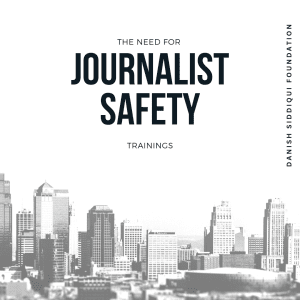Journalists are essential in providing accurate and timely information to the public, particularly in conflict zones, political upheaval, and social unrest. However, reporting from the front lines can be dangerous, and journalists face various risks and hazards, including physical danger, threats to their safety, and emotional trauma. News organizations are responsible for ensuring their journalists’ safety and providing them with the necessary support and resources to carry out their work.
The Importance of Journalist Safety
Journalists face a wide range of risks and hazards while reporting from conflict zones, including physical danger, threats to their safety, and emotional trauma. In recent years, numerous incidents of journalists have been targeted for their reporting, including kidnapping, assault, and murder. For example, according to the Committee to Protect Journalists, 67 journalists were killed in 2022, while a record 363 were imprisoned. These figures highlight the critical importance of journalist safety and the need for news organizations to take every possible measure to protect their reporters.
News Organizations’ Responsibility
News organizations are responsible for ensuring their journalists’ safety and providing them with the necessary support and resources to carry out their work. This responsibility extends beyond providing essential safety equipment such as helmets and body armor. News organizations must develop comprehensive safety plans addressing journalists’ risks and hazards in different environments. They must also provide ongoing training and support to help their journalists cope with the stress and trauma of reporting from conflict zones.
Risk Assessment and Mitigation Strategies
To ensure the safety of their journalists, news organizations must conduct thorough risk assessments and develop mitigation strategies to manage potential risks and hazards. This process involves identifying potential hazards or threats, analyzing the likelihood and potential impact of those risks, and implementing strategies to mitigate or manage them. News organizations must also develop emergency response plans that outline procedures for responding to medical emergencies, evacuations, and other crises. Some specific risk assessment and mitigation strategies for news organizations to consider include:
- Comprehensive Training: News organizations should provide their journalists with extensive training on safety and security measures, including identifying and responding to potential threats and using safety equipment such as helmets and body armor.
- Protective Equipment: News organizations should provide their journalists with protective gear and equipment such as helmets, body armor, and gas masks, as well as communication devices such as satellite phones or two-way radios.
- Emergency Response Plans: News organizations should develop plans that outline procedures for responding to medical emergencies, evacuations, and other crises.
- Emotional Support: News organizations should provide their journalists with emotional support and counseling services to help them cope with the stress and trauma of reporting from conflict zones.
- Local Sources: Journalists reporting from conflict zones should have a network of reliable local sources and fixers who can provide them with information and support.
- Situational Awareness: Journalists should always maintain situational awareness, including observing and assessing potential threats and dangers in the surrounding environment.
Liability of News Organizations
News organizations can be held liable for the safety of their journalists if they fail to take reasonable steps to protect them while working in the field. Liability can arise in several ways, including:
- Negligence: News organizations may be liable for negligence if they fail to take reasonable steps to protect their journalists from harm. For example, if a news organization sends a journalist into a dangerous area without appropriate safety equipment or training and is injured, the news organization may be liable for negligence.
- Breach of contract: News organizations may be liable if they fail to provide the safety equipment or training they promised to their journalists. For example, suppose a news organization promises to deliver its journalists with bulletproof vests and fails to do so. In that case, it may be liable for breach of contract if a journalist is injured as a result.
- Intentional torts: News organizations may be liable for intentional torts, such as assault or battery if their journalists are attacked while on the job. For example, if a news organization sends a journalist into a dangerous area and the journalist is physically attacked, the news organization may be liable for the harm caused.
- Failure to provide a safe workplace: News organizations have a duty to provide a safe workplace for their employees, including journalists. If a news organization fails to take appropriate steps to protect its journalists, it may be liable for creating an unsafe work environment.
News organizations should take proactive steps to protect their journalists while working in the field to minimize their liability for journalist safety. Their support is crucial in promoting and protecting press freedom and journalism worldwide. Today, journalists face numerous risks and threats while covering stories, including physical violence, harassment, and imprisonment. Therefore, news organizations have a responsibility to ensure the safety of their journalists, both for ethical reasons and to comply with legal obligations.
Journalist safety is critical to ensuring the public has access to accurate and timely information. News organizations are responsible for ensuring their journalists’ safety and providing them with the necessary support and resources to carry out their work. By conducting thorough risk assessments, developing mitigation strategies, and providing comprehensive training and emotional support, news organizations can help protect their reporters from the risks and hazards they face while reporting from the front lines. This ensures the safety of journalists and upholds the integrity of the news industry and the public’s right to access accurate and reliable information.




